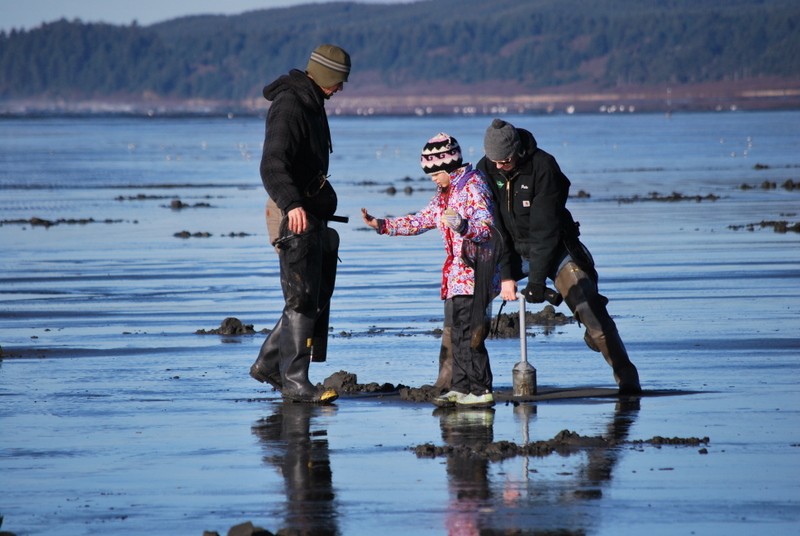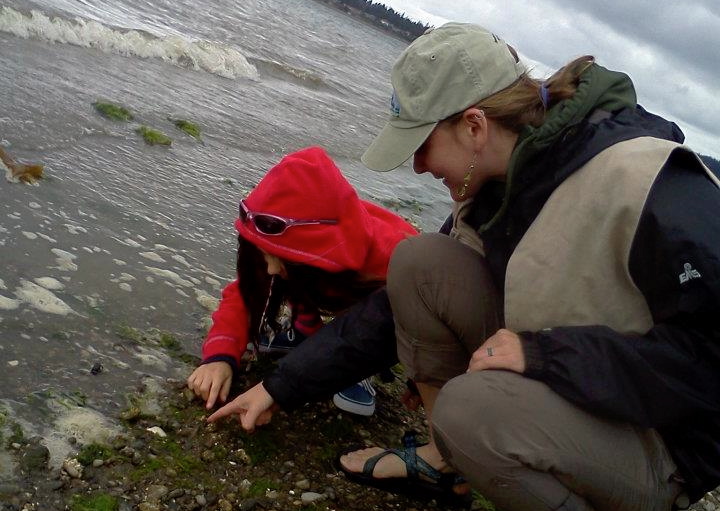By Kate Scriven
 One of the unique and wonderful things about living in Thurston County is our miles of shoreline at the southernmost end of the Puget Sound, the Nation’s second largest estuary. Within this large estuary (a marine area where a freshwater river or stream meets a saltwater body that flows to the ocean) there are multiple “pocket estuaries.” These are areas where small streams meet the Puget Sound and create unique environments, harboring one of the most diverse collections of marine life anywhere.
One of the unique and wonderful things about living in Thurston County is our miles of shoreline at the southernmost end of the Puget Sound, the Nation’s second largest estuary. Within this large estuary (a marine area where a freshwater river or stream meets a saltwater body that flows to the ocean) there are multiple “pocket estuaries.” These are areas where small streams meet the Puget Sound and create unique environments, harboring one of the most diverse collections of marine life anywhere.
The South Sound Estuary Association is a Thurston County based non-profit committed to educating area residents about the importance of our estuaries and how to best care for them. One program run by the SSEA is the Beach Naturalist Program, started in 2010.
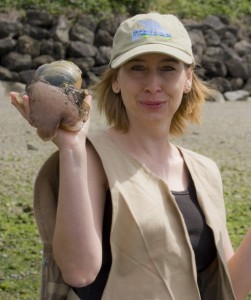
Staffed by trained volunteers, the program started small with 19 trained naturalists available Saturdays at Burfoot Park for the month of July. The response from local residents was overwhelming and the program quickly grew. Currently, the program runs at four local parks – Burfoot County Park, Priest Point Park, Tolmie State Park, and Frye Cove County Park – most Saturdays and Sundays for the months of June, July and August. Forty-three naturalists have been trained for this year with an extensive waiting list.
Program Coordinator Leihla Scharlau says that although we are the second largest estuary, with Chesapeake Bay as the largest, we are much cooler. She explains, “We are a fjord type estuary, meaning we were carved out by glaciers, giving us very unique bio-diversity. We have very deep areas and very shallow areas. Some areas in south Puget Sound can take up to one full year to fully exchange the water in the area. The salt water drops down and the fresh floats on out, keeping the salt water in the same area for a very long time.” With water lingering that long in one area, it’s critical to maintain the health of that environment.
This phenomenon is what creates the amazing diversity, and fragility, of our estuary. “The Puget Sound is amazing,” shares Scharlau, “We have all the extremes – the longest lived shellfish, the longest lived chitin, the biggest shellfish, the biggest octopus species – due to the concentration of nutrients that we have down at the very base of the Sound.”
Most of us have been to a local beach, playing with our kids, or enjoying a bit of time on a blanket while they happily play in the shallow, safe waters of the Sound. However, visiting one of these beaches during a low tide, with the benefit of a Beach Naturalist on site, is a whole different experience. One that makes your child’s eyes grow wide, and maybe yours as well.
Beach Naturalist, Lynn Schneider, has been volunteering for the last two years. Her favorite thing to share with visitors isn’t the largest or most impressive. “I love to show people the barnacles when they are feeding. They extend their tentacles, which look like feathers, into the water to feed. It’s fun as people don’t realize there are little animals living inside the shells that we see all the time on the rocks of the beach.”
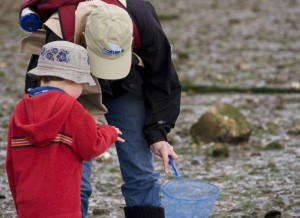
Schneider is passionate about teaching others about the Puget Sound and particularly how it needs our care. “I love it when kids come and are excited, but they don’t really know that much about the estuary environment. As they listen, their eyes light up and right then, they fall in love with The Sound. And, as a result, they also begin to care for it.”
And fostering the care of our fragile estuary is one of the main goals of the SSEA. “We want to build community. The naturalists all live here and we want them to connect with their own neighbors and really love where they live. When you love where you live, you’ll get involved,” shares Scharlau. “Often volunteers join after interacting with a naturalist the year before, getting inspired to do something to help impact the health of the South Sound Estuary.”
The “Meet The Beach” dates run all summer. Naturalists will be available during daytime low tides on Saturdays and Sundays. Times and locations do vary, so be sure to check the Meet the Beach schedule here . It’s a free activity, but visits to Tolmie State Park require a Discovery Pass, an annual $30 fee allowing access to all state parks.
Come dressed for a bit of mess when visiting beaches at low tide. Due to our location at the end of the sound, our beaches are a bit mucky. Wearing tall rubber boots is a must for those who want to keep their feet clean; however water sandals work great for those who can handle a little mud between the toes. Wear clothes that can get dirty and don’t forget the camera. The wonder on your child’s face at the spiky surface of a starfish or the perfect spiral of a moonsnail is not to be missed.
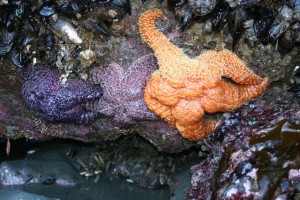
And remember, our beaches are for everyone to enjoy. Please do not take shells or other items off the beach. Those shells break down and are washed back into the watershed, helping to maintain the health of the fragile marine ecosystem and allowing others to enjoy the wonders of our beaches for years to come.
Thrifty Thurston highlights inexpensive family fun in Thurston County. The weekly series focuses on family-friendly activities throughout our community. If you have a suggestion for a post, send us a note at submit@thurstontalk.com. For more events and to learn what’s happening in Olympia and the surrounding area, click here.






























